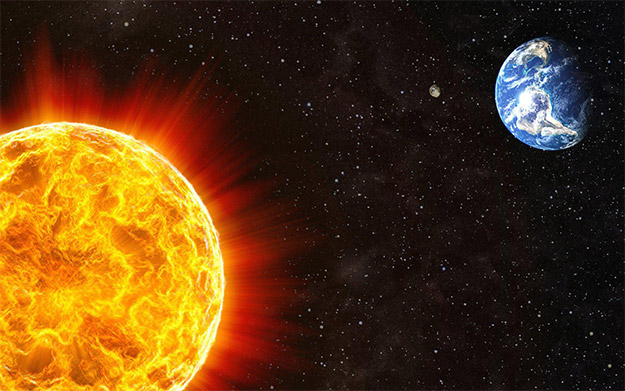
The larger a star is, the faster it burns. If the Sun, which warms us and provides us with food and life, were ten times larger than it actually is, it would have died 10 million (as opposed to 10 billion) years after its formation and we would not be here now. If our planet’s orbit were closer to the Sun than it actually is, everything would evaporate and vanish; if it were further away, everything would be covered in ice. The Sun is the ideal size and at the ideal distance from Earth to support life on our planet.
If Earth were just 1% further away from the Sun or 5% closer to it, our planet would be uninhabitable. The percentages in question are absolutely tiny when one considers the enormous numbers in the universe. For example, let’s consider Venus. The Sun’s warmth reaches Venus, the planet immediately closer to it than Earth, just two minutes before it reaches us. In terms of size and structure, Venus is relatively similar to Earth. However, a small difference in each planet’s orbit distance gives rise to a significant difference: Venus’ surface temperature reaches 470 degrees Celsius, high enough to melt lead. In addition, its surface atmospheric pressure is 90 times that of Earth’s, a fact that makes human life there impossible. (Bill Bryson, A Short History of Just About Everything (USA: Broadway: 2004), 247)
Allah could have created life on each planet if He willed. However, He willed to do so only on Earth by making countless factors dependent upon the most sensitive balances. If even one of these balances were upset, human life on Earth would be impossible. However, since He created and maintains all of perfect flawless balances, our planet exists in a state of flawless creation:
It is He Who splits the sky at dawn, and appoints the night as a time of stillness and the Sun and Moon as a means of reckoning. That is what the Almighty, the All-Knowing has ordained. (Surat al-An‘am, 96)


